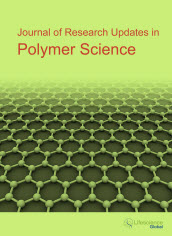jrups
Abstract : An Statistical Analysis of Epoxy Polymer Reinforced with Micro Ceramic Particles
|
|
Abstract: A significant amount of research has been focused on the use of ceramic nano/micro particles to enhance the strength and stiffness of polymeric matrices. This work evaluates the effect of Portland cement or crystalline silica (quartz) particle inclusions into epoxy polymer. Two experiments were conducted based on a full factorial design analysis. Experiment I investigated the effect of Portland cement amount (ASTM III), two types of hardeners (HY 951 and 956) and two curing times (7 and 28 days) on the compressive behaviour and density of particulate composites. Experiment II evaluated the incorporation of quartz or cement particles by mixing different mass fraction levels, considering 28 days of curing time and HY 951 hardener. The samples were prepared in a randomized manufacturing process and tested in compression. The mechanical properties were significantly affected by the type of hardener used. Both particles, considered in appropriate level set, can enhance the compressive strength and stiffness of the composites. Keywords: Ceramic particles, epoxy polymer, particulate composites, mechanical properties.Download Full Article |
Abstract : Soy Protein Isolate/Poly (Vinyl Alcohol) Films with IPN Structure by Crosslinkage of Ferulic Acid
|
|
Abstract: Blend films from nature soy protein isolates (SPI) and synthetical poly (vinyl alcohol) (PVA) were successfully fabricated by crosslinkage of ferulic acid (FA) based on a solution-casting method. Structure analysis results indicated that FA had chemical reactions with both SPI and PVA, a three-dimensional interpenetrated polymer networks (IPN) had formed between SPI and PVA. The miscibility of SPI/PVA blends had improved by crosslinkage of FA. Moreover, the transparency of films had enhanced with the increasing of FA contents, which proved the INP structure of SPI/PVA blends could be adjusted by cross-linking degree. This method supplies a highlight potential usage of SPI as environmental-friendly packaging films. Keywords: Biomaterials, polymers, soy protein isolate, poly (vinyl alcohol), ferulic acid, interpenetrating polymer network.Download Full Article |
Abstract : Microwaves Devulcanization of SBR Containing Carbon Black
|
|
Abstract: Polymer recycling has been the most suitable alternative for management of plastics waste that are responsible by serious environmental damages. However, the recycling of some polymer materials, such as vulcanized elastomers, is not a trivial process. The recycling of elastomers is a process more complex than the recycling of thermoplastic polymers because the elastomers cannot be remolded by simple heating after vulcanization. Methods for rubber devulcanization has been developed as an interesting alternative for recover flow properties of elastomers, allowing other molding cycle. The aim of this work was to evaluate the effect of the presence of carbon black on devulcanization of styrene-butadiene rubber (SBR) by microwaves and analyze properties of recycled material. The devulcanization by microwaves showed efficiency for rubber compositions with higher content of carbon black incorporated as well as the properties of recycled material showed satisfactory performance for reuse in other products. Microwaves devulcanization of SBR is an important alternative for reuse of rubber waste and decrease of the environmental problem generated with discard of these materials. Keywords: Devulcanization, microwaves, rubber recycling.Download Full Article |
Abstract : Use of Hydrophilic Monomers to Avoid Secondary Particle Nucleation in Miniemulsion Polymerizations of Methyl Methacrylate
|
|
Abstract: Miniemulsion polymerization is widely used to produce polymer nanoparticles. In many applications, it is important to ensure the narrow particle size distribution of the final product, which means that secondary micellar and homogeneous nucleation must be avoided during the reaction course. The present study proposes the use of hydrophilic comonomers to inhibit the occurrence of secondary particle nucleation in miniemulsion polymerizations of methyl methacrylate. Acrylic acid, metacrylic acid, 2-hydroxy ethyl methacrylate and methacrylamide were used as hydrophilic comonomers. It was observed that the use of small amounts of hydrophilic comonomers in miniemulsion polymerizations promoted by oil-soluble initiators could prevent secondary particle nucleation and lead to products with more homogeneous particle size distributions. Keywords: Miniemulsion polymerization, nanoparticle, methyl methacrylate, homogeneous nucleation, hydrophilic monomers.Download Full Article |






















